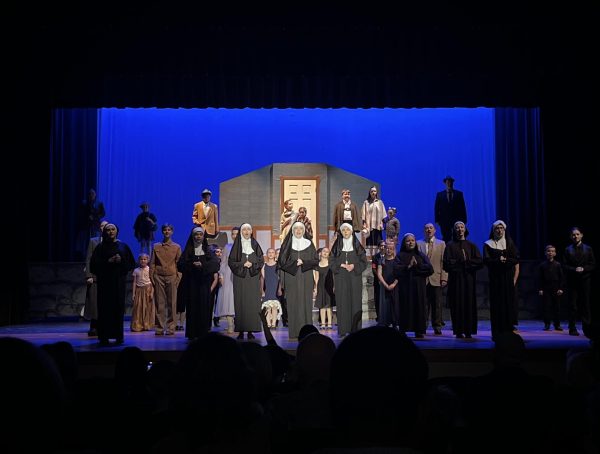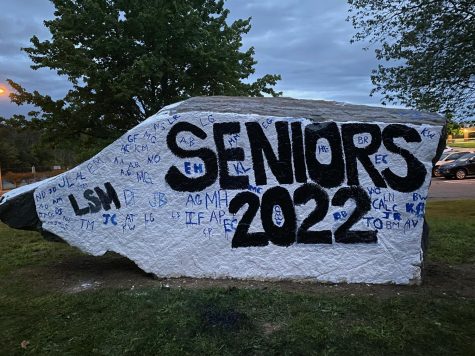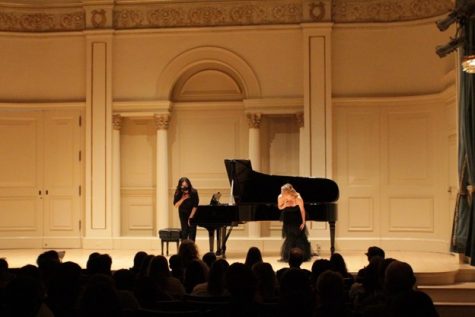Does class rank fuel healthy competition or layer excess stress upon students?
Competition for the coveted spots of valedictorian and salutatorian may be winding down for increasing ranks of future high school graduates, including those at Mills.
April 6, 2017
In a society where competition flourishes, class rank and grade point average (GPA) are becoming more and more vital to students’ everyday lives. There is a growing pressure for students to be at the top of their class, or attain near-perfect GPAs. With apps like Powerschool, kids can get immediate updates on their grades, adding to the already overwhelming stress they deal with. This stress to succeed and beat out other classmates is a growing concern for the new principal of Lewis Mills High School, Chris Rau.
Some students are choosing their classes based on how they will contribute to their GPAs, rather than picking classes that will satisfy their own interests. This has caused alarm for many of Mills’ faculty members. For example, most art and culinary classes at Mills are considered Level 2 classes. With the weighted GPA scale that Mills uses, the highest GPA a student can achieve in one of these classes is a 4.3. This is less appealing than the 4.7 offered by a Level 1 or the 5.3 offered by an AP. Many kids will opt out of taking a Level 2 class in a subject they’re passionate about, in exchange for an AP or Level 1 credit in a class they would not enjoy.
It happens more often than not, according to Meredith Silver, a guidance counselor at Mills.
“We see that all the time,” she remarked, adding, “It ends up being less about what they’re interested in. A lot of times it just becomes a numbers game.”
There have been talks of amending the current system in order to get away from the complications caused by the policies that stand. The change would shift students away from the system of class rank, towards a percentage based system. For example, there would no longer be a valedictorian and salutatorian recognized at graduation. Instead, the top 5 percent and 10 percent would be recognized. This would attempt to alleviate some of the pressure that the current system puts on students. When asked about the changes, Silver concluded that it would definitely help in situations where students are separated by hundreths, or even thousandths, of a grade point. However, she made it clear that this would in no way solve the issue, only help to lift some of the immense pressure that students deal with.
Rau recognizes that this change would be no panacea for stress related to education.
“I can’t completely eliminate the societal pressures that exist,” Rau said, referring to the anxiety students face pursuing academic success. Despite that, he does want to make a difference in the way students look at school. He related the perspective to a personal hobby of his: running. Like in school, you can choose to care what place in the race you are in, or you can choose to run at your own comfortable pace.
Of course, not everyone thinks the current system needs to go. John Stocker, a current junior at Lewis Mills, and 31st in his class, thinks that the stress is nothing out of the ordinary.
“I feel like that’s common for high schoolers to experience some sort of stress based on wanting to excel at school,” he said, going on to add, “A little friendly competition isn’t that bad.”
Stocker’s class rank doesn’t mean much to him, considering he knows that how small the numbers are that may separate the ranks. As far as the possible change in policy goes, Stocker believes that it will have very little to no effect on the current stress level of students.
As for the fate of the Lewis Mills policies, Rau anticipates a 2018-2019 change. A proposal may be brought in front of the Board of Education within the upcoming school year, although it wouldn’t take effect immediately.









